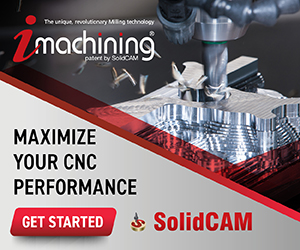Passive/Dynamic Vibration Damping: How It Works
Sponsored ContentThe best way to control unwanted vibration is with passive/dynamic systems that utilize tuned mass damper concepts to absorb vibration before it progresses and disrupts the machining process. Here’s how it works.
Share
Vibration is generated by the changing forces that occur when making chips. The intermittent forces are apparent in the interrupted cutting process of milling and also appear in turning operations when the toolholder bar is periodically loaded and unloaded as chips form and break.
A passive approach to vibration control in machining operations involves maximizing the rigidity of elements within the machining system. For example, to restrict unwanted movement, machine tool manufacturers can utilize rigid structural elements, fill internal chambers with concrete or another vibration-absorbing material and make machines larger and heavier overall.
Passive/dynamic vibration damping enables productive, high-quality machining with much larger tool length-to-width ratios…READ MORE.












.jpg)





